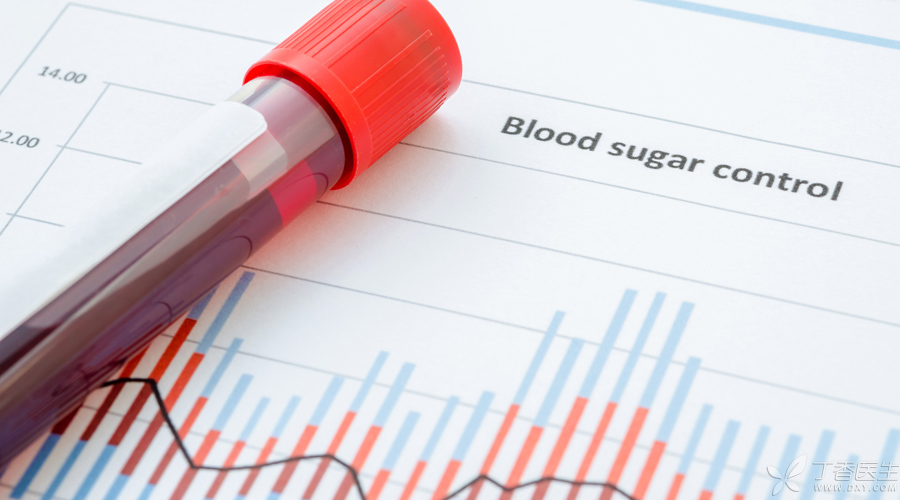
Dr. Clove often tells sugar lovers that blood sugar monitoring is essential for diabetes.
However, when it comes to blood sugar monitoring, there is much more to pay attention to, not just pricking fingers.
Today, we invited [four sister flowers] from blood sugar monitoring to tell us about the doorway inside.
Elder Sister: Capillary Blood Glucose
Of our sisters, you must know me best! I am what people often call [finger blood sugar].
I can meet you at any time. Convenience, quickness and sensitivity are my characteristics. I believe everyone has also experienced it. For example, if you eat too much at a meal or are too lazy to exercise, the blood sugar of your fingers will rise when measuring.
However, there are also some friends who think I am in trouble and are too lazy to come to me. This is not possible!
Let me give you three pictures below. You can date me on time according to your own situation.
However, there are also some friends who think I am in trouble and are too lazy to come to me. This is not possible!
Different conditions, people need to meet me at different times. Whether the blood sugar is up to standard will affect the time when capillary blood sugar needs to be measured. The standard of blood sugar is up to standard, which needs to be determined by doctors according to personal circumstances. Generally speaking, glycosylated hemoglobin < 7.0% is up to standard.
Let me give you three forms below. You can come to date me on time according to your own situation.
Table 1 Glucose Monitoring Schemes for Basic Insulin Therapy
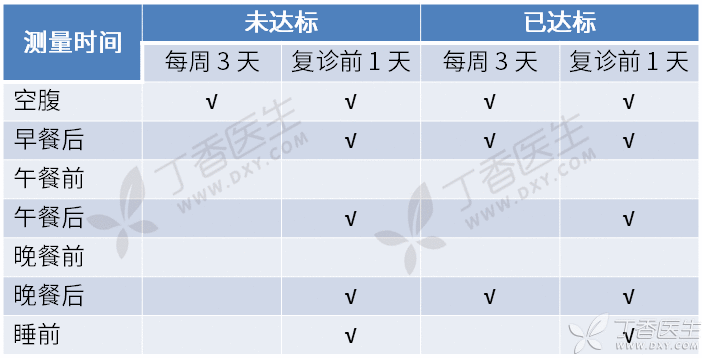
Note: √ To monitor the blood sugar time, follow up every two weeks before the blood sugar reaches the standard, and follow up once a month after reaching the standard.
Table 2 Blood Glucose Monitoring Regimen for Premixed Insulin Therapy twice a day
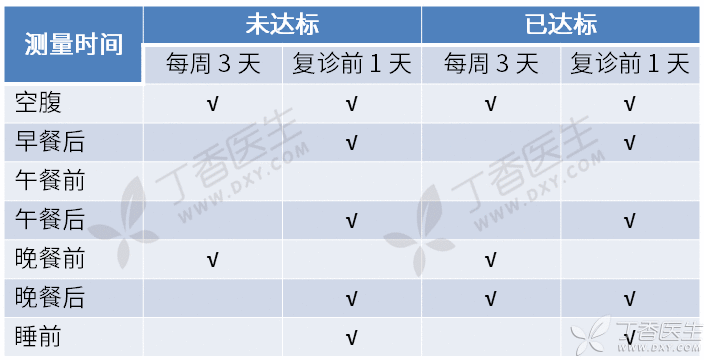
Note: √ To monitor the blood sugar time, follow up every two weeks before the blood sugar reaches the standard, and follow up once a month after reaching the standard.
Table 3 Glucose Monitoring Schemes for Non-insulin Therapy
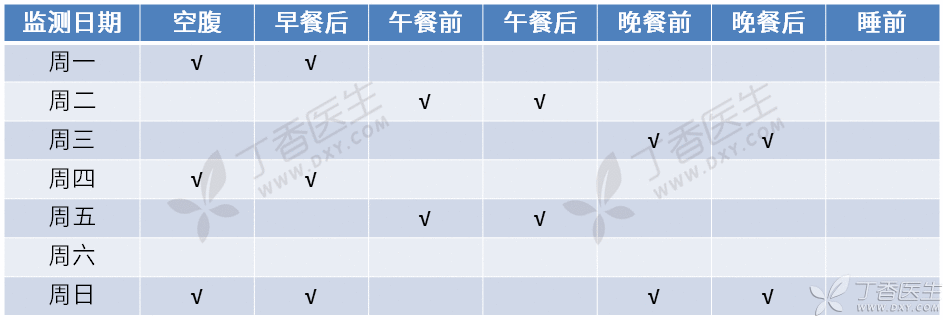
Note: √ is to monitor blood sugar time.
In addition, it is necessary to remind everyone that when measuring finger blood sugar, the method must be correct. If the operation is improper and the measurement is not accurate, it will be in vain.
Is how the correct way to measure blood sugar? Click: A picture to measure blood sugar!
My greatest role is to help everyone understand the quality of blood sugar control. I can’t use it to judge whether I have diabetes. To diagnose diabetes, I have to let my twin sister, venous blood sugar, take the lead.
Although we are twin sisters, there is still a difference between my venous blood sugar and mine:
- I am the representative of [whole blood sugar]. I take blood from the fingertip. The blood composition is complete, including red blood cells, platelets, white blood cells, plasma and other components. My sister’s venous blood sugar is drawn from the vein and treated to remove red blood cells, white blood cells and platelets. Generally, only the glucose concentration in plasma is measured.
Therefore, when we judge the blood sugar level, there is also a difference.
Under normal circumstances, when the blood glucose concentration is less than 5.6 mmol/L, our difference will not exceed 0.83 mmol/L; When the blood glucose concentration is ≥ 5.6 mmol/L, our deviation is not more than 15%.
However, because I am easily influenced by various external factors, I am often [inferior] to my sister’s venous blood sugar and cannot be used to diagnose diabetes.
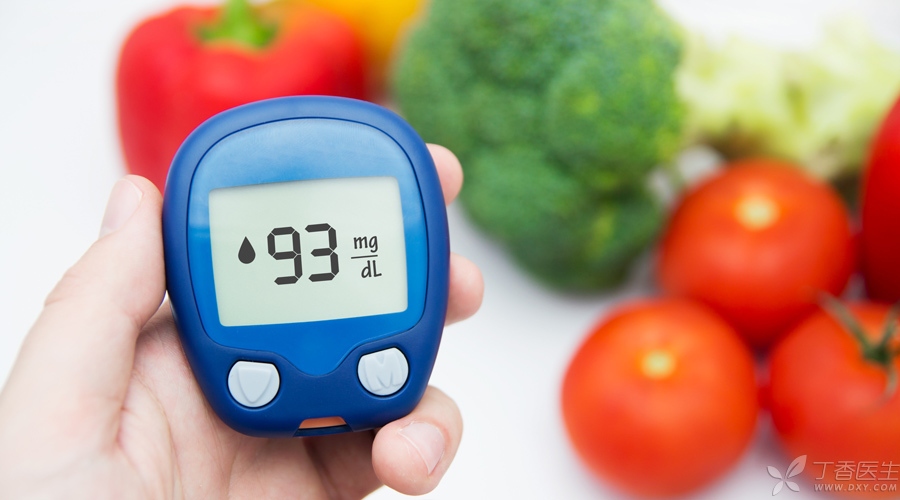
Second Sister: Glycosylated Hemoglobin
My father is glucose in blood and my mother is hemoglobin in red blood cells. The crystallization of their love, glycosylated hemoglobin is me [glycosylated hemoglobin] ~
My elder sister’s capillary blood sugar is impetuous and can only reflect the blood sugar measurement at that time, while I am [working slowly and working carefully] and can see clearly the average blood sugar of everyone in recent February to March.
Moreover, my character is relatively [calm] and is not affected by lifestyle changes such as short-term diet and exercise. Therefore, it is possible to draw blood for testing at any time.
However, it is also because of my slow temper that if everyone’s blood sugar fluctuates greatly, the blood sugar rises and falls, and [offsets] each other, the average blood sugar may be normal.
I also have regular dates with everyone: at the beginning of hypoglycemic treatment, my sugar friends and I meet at least once every 3 months, and once the treatment target is reached, we can measure it every 6 months.
Third Sister: Glycosylated Albumin
Hello everyone, my second sister [glycosylated hemoglobin] and I are half sisters: my father is also glucose in the blood, while my mother is albumin in the blood.
My situation is very similar to that of Second Sister, but I reflect the average blood sugar level in the last 2-3 weeks. For sugar friends who are hospitalized for a short period of time, I can better reflect the blood sugar metabolism control level in the short term than glycosylated hemoglobin.
If you want to know the average blood sugar level in the last month, you can ask me.
Dynamic Blood Glucose Monitoring System
I am the youngest sister. The dynamic blood glucose monitoring system consists of five parts: glucose sensor, cable, blood glucose recorder, information extractor and analysis software.

As a new generation of technology fans, my ability is very strong. As long as the glucose sensor is implanted under the abdominal skin, I can measure a blood sugar level every 5 minutes and store 288 blood sugar levels every day. Generally, it is used continuously for 72 hours.
It is this ability that I can provide continuous, comprehensive and reliable all-day blood sugar information, understand the trend of blood sugar fluctuation, and find hyperglycemia and hypoglycemia that are easily ignored by elder sister [capillary blood sugar].
Of course, the cost of using me is relatively expensive, but for some patients, it is still necessary, including:
- Type 1 diabetes mellitus; Patients with type 2 diabetes who need intensive insulin therapy (e.g. Subcutaneous insulin injection therapy or intensive insulin pump therapy more than 3 times a day); Patients with unexplained hypoglycemia or hyperglycemia and large blood sugar fluctuation.
Well, that’s all for the self-introduction of the blood sugar monitoring sisters today. After reading this article, I believe everyone should be able to distinguish the uses and differences of different blood sugar monitoring methods.
Having said so much, to sum up, blood sugar monitoring is this sentence: monitoring on time and reviewing regularly.
Only by doing one’s own [blood sugar guard] well and fully understanding one’s own blood sugar change rule can one have a definite object in view in treatment and achieve better therapeutic effect.
